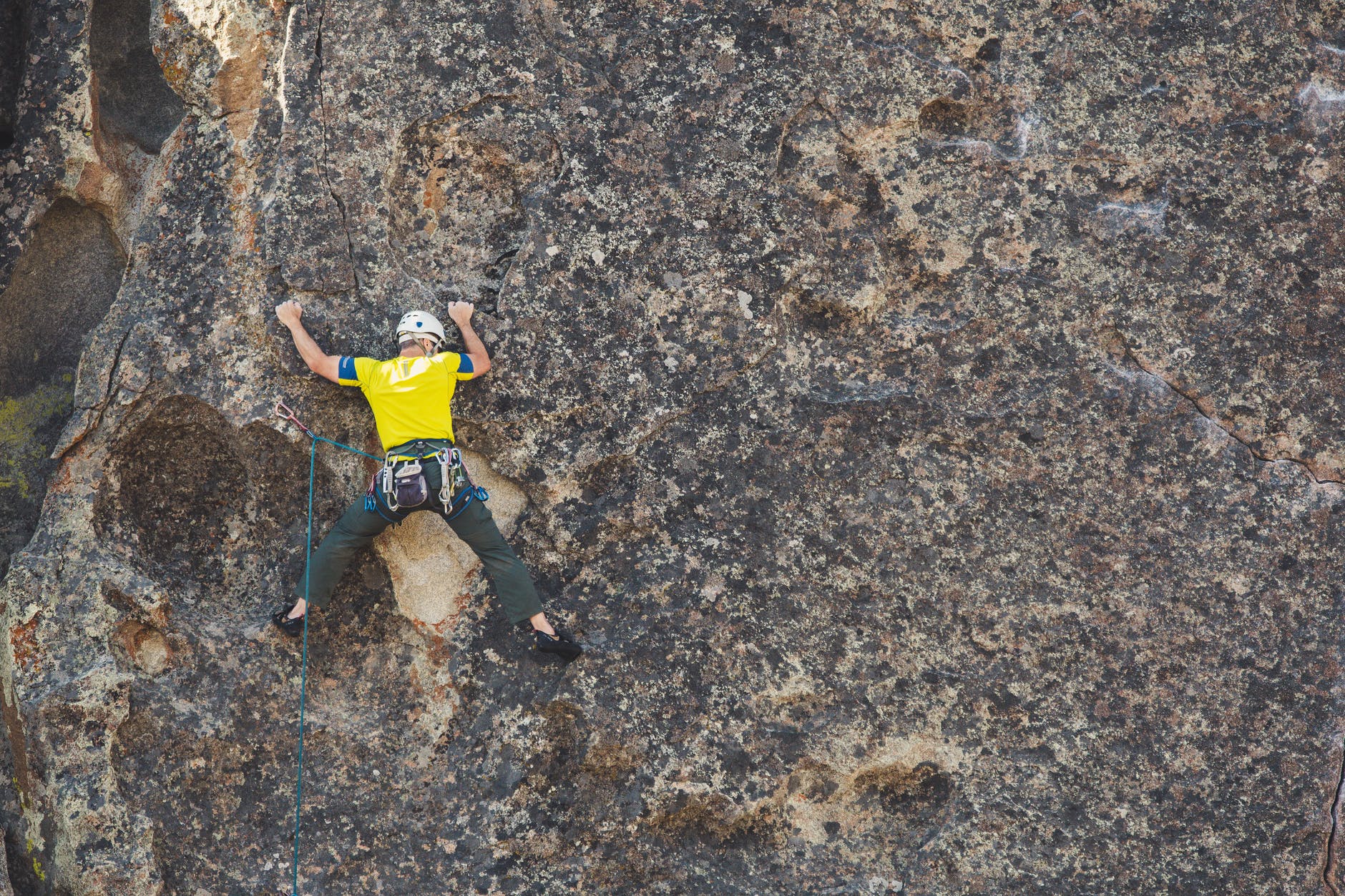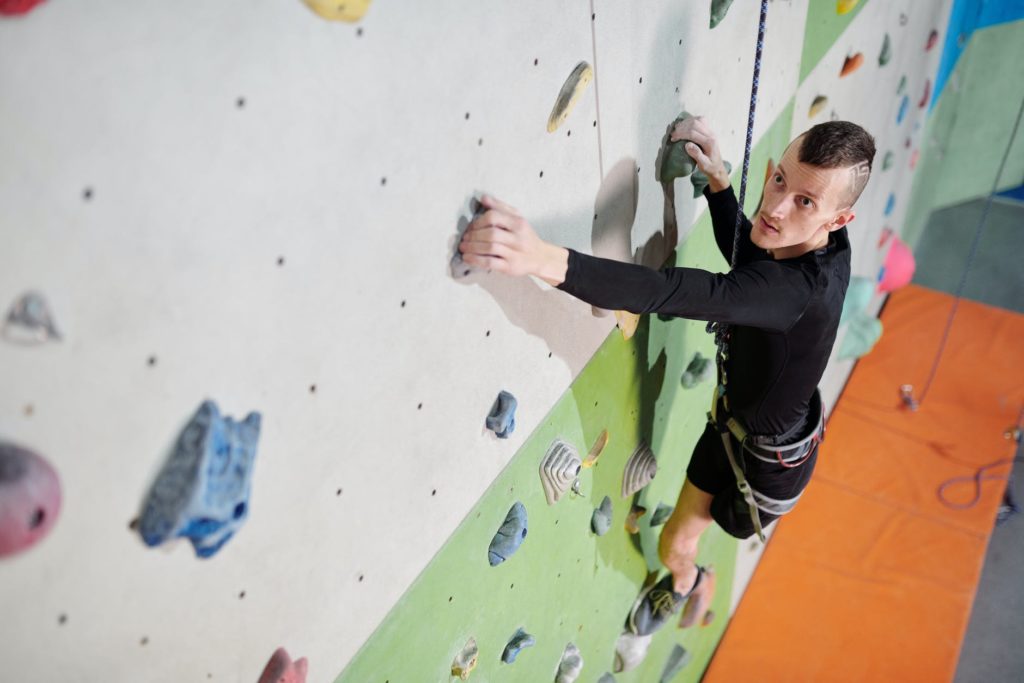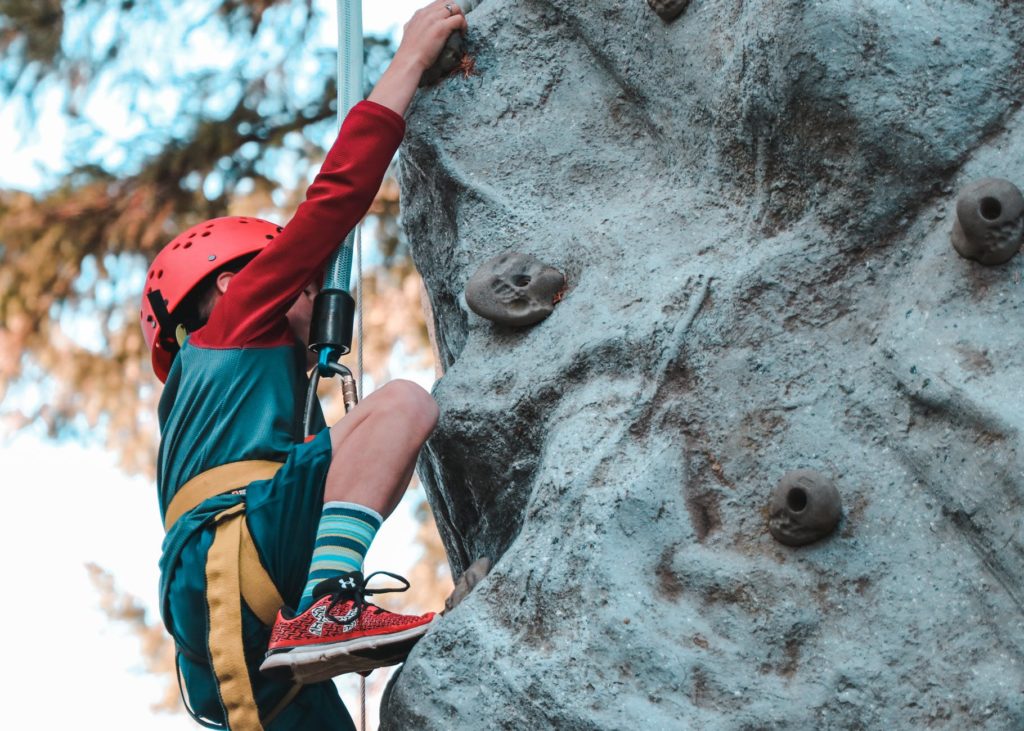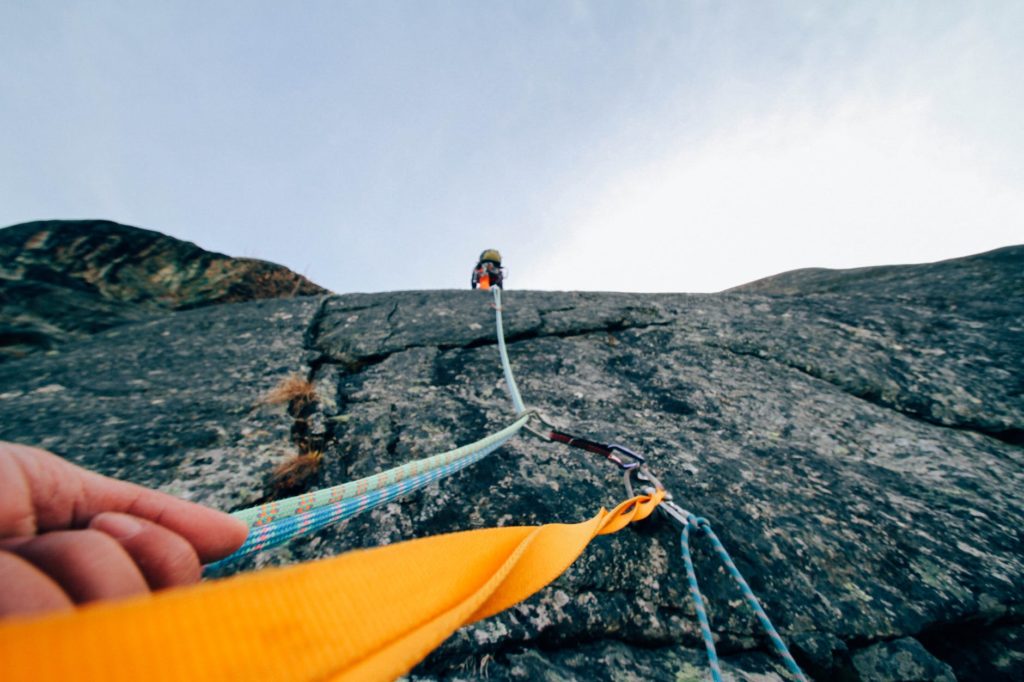Rock Climbing Guide for Beginners

Are you wondering what rock climbing is? Do not look any further; we have the best rock climbing guide for you. This fascinating sport has recently qualified as an Olympic sport and is known to transform a person physically as well as mentally for good.
Let’s dive into the details of rock climbing.
What is Rock Climbing?
Rock climbing is a sport or activity of climbing rock formations or walls with the help of special equipment. The aim is to reach the summit or the endpoint of the rock formation or wall without falling.
Rock climbing is a very demanding sport, both mentally and physically. It tests the endurance strength, balance, and agility of the climber along with mental control. Without proper knowledge of climbing techniques and specialized equipment, it can be a dangerous sport.

Rock climbing is separated into different types, each with its own setting, surface, and equipment.
Types of rock climbing:
There are different types of rock formation around the world, from sedimentary to igneous to metamorphic. Some rock climbing courses are built on artificial walls, while others are natural rock formations. Let’s take a look at different types of Rock Climbing.
Indoor Rock Climbing:
Indoor climbing is a type of rock climbing that is done within a confined building or room. It is usually done on fake climbing wall construction.
Indoor climbing allows the climbers to enjoy the sport at any time of the day and weather conditions. It is often used to improve the climbing techniques and skills of the climber.
Top roping
Top roping climbing is a great way to initiate roped climbing. There are seldom any serious falls because the rope catches you, which minimizes the risk of injury. Top-roping requires another professional to assist as you climb; this is known as belaying. The professional is responsible for feeding rope and lowering when you descend the route. Top roping is a great way for beginners to get used to rock climbing and practice a new route.
Sport Climbing
Lead, or sport climbing, is a versatile type of rock climbing, which offers a range of difficulty and route-length. Sport or lead climbers focus on correcting their moves and techniques instead of reaching the destination itself. Falling is expected in sport climbing and needs to be planned accordingly. The climber, when going on a difficult route, may fall several times before reaching the destination. The rope in the lead is used differently than top-roping. The rope anchors follow the pre-planned route from beginning to end.
Note- do not forget that you need a partner belaying you in sport climbing.
Traditional climbing
Unlike sport climbing, where the focus is on physical intensity, traditional climbing is about holistic experience. These climbing routes do not have anchors bolted into the wall; instead, the climber is responsible for using protection. A sling or carabiner is attached to keep the climber secured to the rock climbing wall to each protection. Traditional climbing involves the challenge of using rock climbing equipment and gear.
Big wall climbing
Big wall climbing is not a very popular form of rock climbing, but it is the most notorious of all. The routes take several days, forcing teh climber yo to spend the night on the portal edges hanging thousands of feet above the ground. Big wall climbing is for the daredevils and professional climbers because these are the most perilous.
Bouldering
Two types of rock climbing do not require the use of rope at all, bouldering and free-soloing. Bouldering is the safer of the two. The bouldering routes are not more than 15 feet high and are a scaled-down version of sport climbing. You can expect repeated falling; therefore, you need to perfect the moves and techniques. Bouldering is far less expensive than other types of rock climbing, as it requires less gear. When bouldering indoors, all you need is athletic clothes, a chalk bag, and good climbing shoes, and when outdoors, just add some crash pads.
Free Climbing
Free solo or free climbing is done without the use of ropes or any assistance device. The free climb is totally dependent on the ability of the climber to ascent. Hence free solo is an extremely dangerous type of rock climbing when going at heights that can cause severe injury or death.
Ice climbing
In ice climbing, the climbers have to ascend the ice formations like glaciers or frozen waterfalls. Climbers have to wear crampons instead of climbing shoes. Instead of hands, special equipment, and tools like picks and axes are used to climb. Ice climbing equipment like an ice screw is used to screw into the ice and attach a running belay or safety anchor.

Rock Climbing Skills and Technique
After learning the basic climbing techniques, you will start to notice a different range of difficulties, and the grading system is that place. If you want to master the climbing skills, you will need to learn how to pick a route and how to advance further.
Lead Climbing and Belaying
The most important thing to take care of when climbing is ‘safety.’ This is where setting a route and ensuring it is belayer is critical.
Here is some concept you need to understand:
- Belay/ Belaying: using rope as a tension stopper to ascent on a rock and prevent from falling on the ground. A belayer needs to learn how to operate the belay device and keep the climber safe.
- A figure of 8 knots: Figure 8 is a way of tying the rope. This is considered the most proper and safest way of securing the climber to the end of the rope before climbing. Another popular way of tying a knot is the Bowline.
- Hitches: The basic types of hitches are– clove, girth, and munter hitch.
- Bends: this is a knot that joins two ropes together and creates a loop out of cord or webbing.
- Safety Checks ensures that the belayer and you can communicate properly and keep a check on each other’s gear. Ensure that the rope is tied securely and the harness is well secured.
Rock Climbing Equipments:
Rock climbing is a sport that requires specialized equipment and gear to perform well. This sport is not as expensive as diving or mountaineering. But as you advance, you will have to spend more on new equipment.
- Climbing shoes:
- Harness
- Carabiners
- Gloves
- Hand chalk
- Quickdraws
- Belay devise and a rappelling device
- Rope
- Helmet
- Clothes
- Crash Pads
- Pro
These are the main equipment that you would require to invest in when beginning rock climbing.

Climbing Tips
Some basic climbing tips to learn:
- More use of feet. Search for footholds first, and then lean-in or bring your leg higher and stand up. Avoid using hands to pull yourself up.
- Make full use of eyes to look around.
- Attempt the hold always.
- Always wear your helmet.
- Keep the hands straight.
- Learn to breathe and do not panic.
- If you are outdoor climbing, always keep it clean.
Why Should You Hire A Rock Climbing Guide?
Hiring a rock climbing guide is a great way to improve your skills, depending on your goals. When you hire a guide, you will be capable of undertaking a more challenging route and also improve the experience. A guide can also give you access to specific regions and not to forget he/she can also teach you about proper rock climbing safety guide.
When Is the Best Time to Go Rock Climbing?
A neutral environment is ideal for climbing. Summer, spring, and fall are some of the best weather. Extreme weather situations can make it difficult for you to complete the route safely. During summers, rock can heat up extremely, which makes it difficult to climb. Whereas in winters, the ability of a climber to climb up is hindered across any surface.
Final Words:
Rock climbing is a fascinating sport. In this article, we have discussed in detail what is rock climbing and its types. When performed with utmost safety and guidance with the use of specialized equipment, the rock climbing experience can be extremely fun. If you are a beginner, you can also hire a rock climbing guide and improve your skills.






